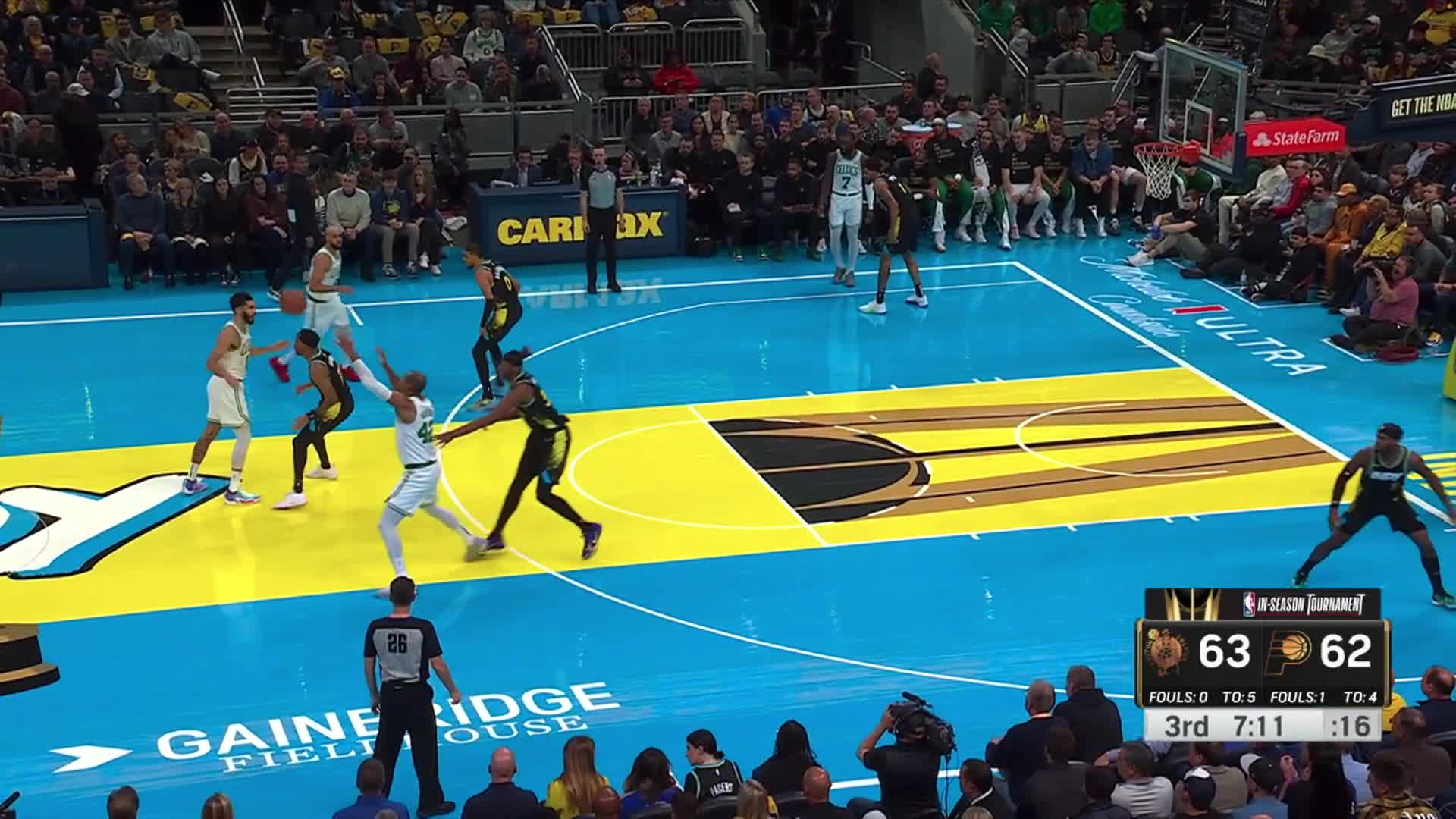
10 Celtics/Pacers Takeaways: Celtics Reveal Drastic Strategies for a Stronger Comeback
The Boston Celtics had just lost 106-101 to the Miami Heat in the Eastern Conference Semi-Finals. Brad Stevens was still the head coach. We’re three years, two head coaches, and an NBA finals appearance removed from when I posted that Tweet. Yet here we are, still talking about third-quarter struggles and how the Celtics can’t seem to start the second half on the right foot.
Against the Indiana Pacers, in the quarter-finals of the in-season tournament, the Celtics lost the third quarter by 14 points. Boston shot 3-of-10 from deep, was outrebounded 12-14, and outscored on the interior. We’ve seen this story too many times, even if we narrow the scope to this season.
At this point, it feels redundant to say they need to figure things out. They’ve been needing to figure it out for three years.
I’m not anti-three-pointers. I like the fact the Celtics have incorporated more interior play into their offensive system this season, and I think the balance, for the most part, is right where it should be. However, there has to be some self-awareness, too.
As a unit, the Celtics shot 29.3% from deep on 12-of-41 shooting. They went 34-of-56 inside the three-point line. 11 of Jayson Tatum’s buckets came from two-point range, and so did 12 of Jaylen Brown’s.
You can’t expect the Celtics to go away from their perimeter game totally. Their offense relies on spacing, and being a threat to fire from deep is a core principle surrounding that threat. However, when it’s apparent it isn’t your night, maybe tone down the perimeter offense and look to feed what is working and is having consistent success.
I’m not saying to take 25 threes. That’s far too low of a number also to keep the floor spaced and the defense honest. 35-38? Sure. If you know it’s not your night, and the Pacers’ intensity is impacting your ability to get clean looks, then switch it up. Part of the problem is becoming too predictable.
Speaking of predictability…Boston’s half-court offense has been a tough watch in recent weeks. Look past the win/loss totals, look past the big scoring nights from one or two guys in the rotation, and focus on the execution. It’s been rough.

There’s a great clip circling the internet at the moment. In it, Kara Lawson is describing why second actions are so important at the highest levels of basketball. Lawson explains how every team knows your playbook, and oftentimes, your initial actions are countered and blown up, at which point, it’s how you react that’s important.
I’ve discussed the Celtics need to incorporate more counters into their offense in recent editions of the takeaways, so I’m not going to harp on them too much here. However, I do want to provide an example of an initial action that is well-defended that then led to a disjointed possession ending in nothing.
The Celtics went to a “Ram action” in the above clip. It’s designed to create a mismatch on the perimeter and potentially in the post, too. It forces multiple switches, and ideally, the second screener receives a pass and attacks his mismatch. Boston had significant success with this action under Ime Udoka.
Here, the Celtics look to get Tatum a mismatch with Tyrese Haliburton — as they did throughout the game. However, as the switch occurs and Aaron Nesmith picks up Dalano Banton, the play breaks down. Nesmith knows Banton wants to feed Tatum and gets active in denying the passing lane.
Banton holds onto the rock a little too long and is forced to go with Payton Pritchard, who misses a contest mid-range jumper.
Now, this play broke down when Nesmith killed the passing lane. But Banton isn’t the only one at fault. Tatum could have re-screened. He could have relocated to make the pass easier. Pritchard could have curled to get a handoff above the perimeter, giving him extra options on his drive. Instead, everybody stood still. The shot clock wound down, and the possession ended exactly how the Pacers wanted it to.
There has to be a commitment from everybody on the court to work for each other. When everybody is moving, good things happen; just look at how it flows in the clip below.
First of all, let’s give Luke Kornet some credit because his exit screen made this play. And second, why are possessions like this the exception and not the rule?
Building off of the above point, most of what the Celtics are running is principal-based. There are very few possessions where we’re looking at a designed play, at least in the open court. That’s perfectly normal. Teams often save their set plays for late in the fourth or during out-of-bounds possessions.
Still, when your offense isn’t clicking how you want it to, and the defense is pressing up on you, having some set actions you can flow into makes all the difference. I totally get not wanting to give everything away so early in the season and keeping some curveballs in your back pocket. However, the point of having a coach is to help stem the bleeding at times, especially when it’s clear the guys on the floor are struggling to figure it out.
The Celtics struggled to contain dribble penetration and second-drive actions on Tuesday. Tyrese Haliburton’s presence was clearly a big factor, but he wasn’t the only player getting to the rim whenever he wanted.

Leave a Reply